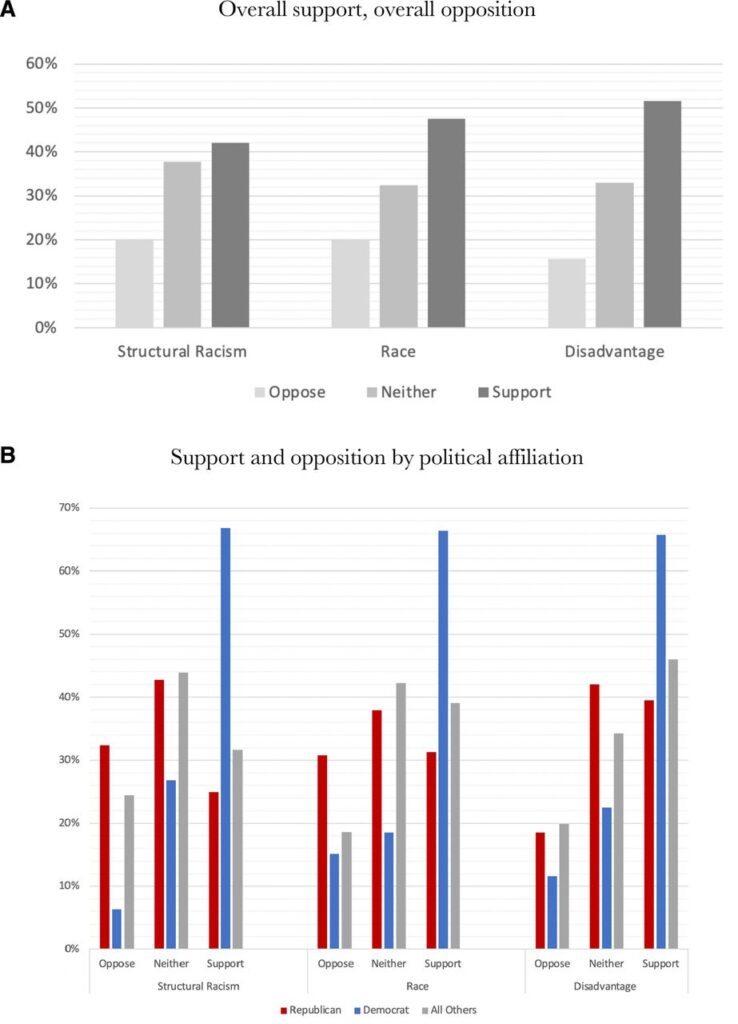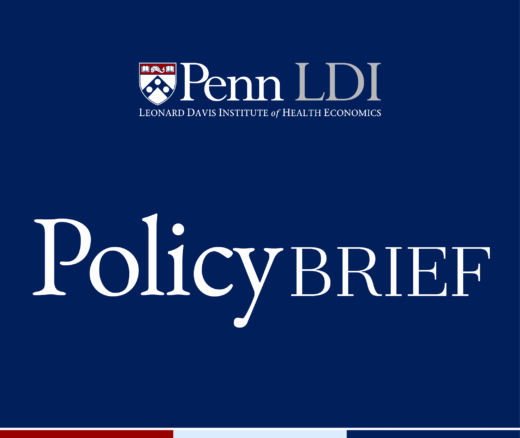
Analysis of the Rural Health Transformation Program
Memo: Response to Request for Analysis
Blog Post

Last fall, state governments had to prioritize who received COVID-19 vaccinations and booster shots and when. It was complicated. Most states (n=34) used a disadvantage index in their allocation strategy, and nearly half explicitly aimed to advance equity within allocation phases. In a recent BMJ Journal of Medical Ethics study, LDI Senior Fellows Harald Schmidt and Alison Buttenheim, along with their colleagues, studied how the public felt about the government using disadvantage indices.
The researchers surveyed a national sample to understand whether support for vaccine prioritization of a disadvantaged population varies if the equity-promoting policy is described as benefitting (1) disadvantaged racial and ethnic groups, (2) disadvantaged racial and ethnic groups affected by structural racism, or (3) disadvantaged groups defined by geographical location (place-based).
Figure A shows that overall support for additional allocations was highest under the place-based description at 51.5% and lowest under the structural racism description at 42.1%. There were big differences in political affiliation. Democrats supported prioritization for disadvantaged groups regardless of how the strategy was described. Republican responders were much less supportive, particularly when the strategy was described as benefitting groups affected by structural racism. It is not surprising to find sharp political divides in the U.S. However, it is important for public health leaders to understand public opinion as they design programs and communicate with the public.
The study, Public Attitudes About Equitable COVID-19 Vaccine Allocation: A Randomized Experiment Of Race-Based Versus Novel Place-Based Frames, was published on August 4, 2022, in the BMJ Journal of Medical Ethics. Authors include Harald Schmidt, Sonia Jawaid Shaikh, Emily Sadecki, Alison Buttenheim, and Sarah Gollust.


Memo: Response to Request for Analysis

Lessons from the Past, Imperatives for the Future

A New Study of a Sample of Facilities Found Half Without Any Behavioral Health Staff

Physicians Were Paid About 10% Less for Visits Involving Black and Hispanic Patients, With Pediatric Gaps Reaching 15%, According to a First-of-Its-Kind LDI Analysis

A New Review Finds Hospital Mergers Raise Prices Without Improving Care, and Urges Regulators to Stop Accepting Quality Claims to Justify Consolidations

Technology Helps Older Adults Stay at Home—But May Delay Necessary Transitions to Higher Levels of Care